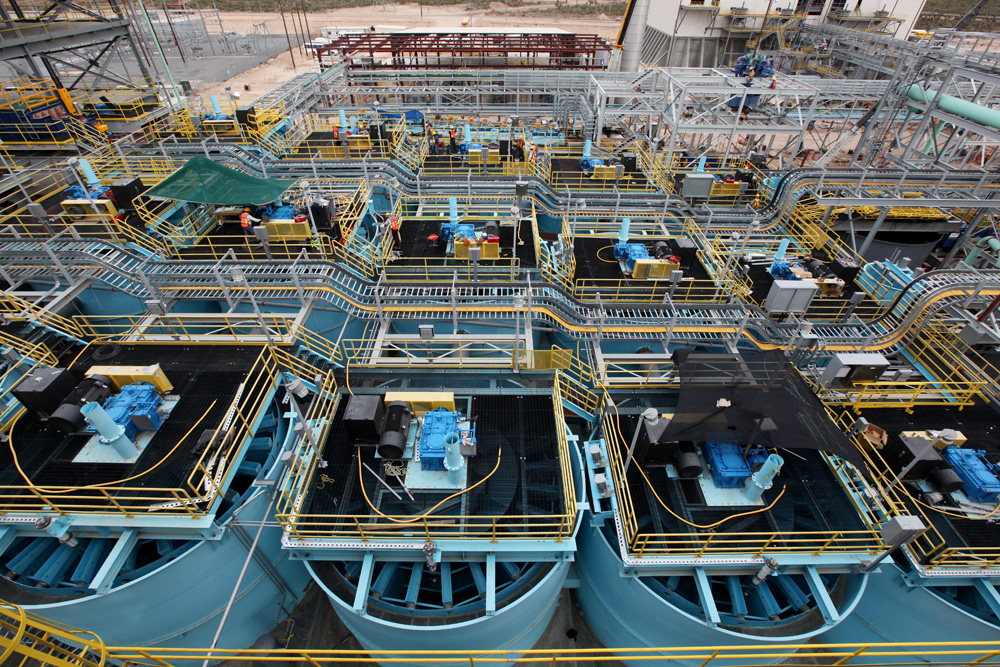FLSmidth recently announced two important flotation innovations – its mixedROW™ Flotation System, which “combines the best attributes of two technologies to create next-level results” and the Froth Recovery Upgrade Package which finds solutions to flaws found in original froth recovery technology. Ahead of the Flotation Technology report in the November ’19 edition of International Mining, Editorial Director, Paul Moore caught up with Dariusz Lelinski, Global Product Director, Flotation at FLSmidth to get some further insight into these developments as well as trends in the wider flotation equipment market. The following is summary of the discussion:
Q Can you explain in more detail the type of operation (commodity or nature of ore) that would most benefit from the use of mixedROW™?
mixedROW™ can be implemented everywhere mechanical flotation cells are used. Forced air machines (nextSTEP™) and self-aspirated machines (WEMCO®) can be used interchangeably in all applications. Both will recover vast majority of recoverable material and the subtle differences (particle size, shape, liberation and mineralogy) in recovered material between these two are the advantage of the mixedROW™ application. Overall recovery increases vary between 1-3% depending on application, and this improvement, even if it is not a large number, translates to very large economical gain, in many cases equal to tens of millions of dollars annually. In addition to differences in hydrodynamics, absorbed energy and specific energy in the rotor region, both machines have different froth recovery mechanisms; nextSTEP™ has very stable froth layer which can be very deep, while WEMCO®’s froth is very dynamic (‘WEMCO® wave’). These differences also influence type of particles recovered by both types of machines and add to range of particles recovered by mixedROW™.
Q Are there elements of it that can be retrofitted to existing but ageing flotation plants eg putting it before and after the older cells then cutting out a lot of the older cells completely?
The concept of mixedROW™ can be applied to existing installations; part of the forced-air row can be retrofitted with WEMCO® mechanisms; and part of the self-aspirated row can be retrofitted with nextSTEP™ mechanism. Old installations having worn, old-type mechanisms always benefit from retrofitted new parts, but retrofitting them with combination of nextSTEP™ and WEMCO® will increase the benefits even more.
Q Can you comment on any operations that have trialled or already using mixedROW™?
There are quite a few installations where the mixedROW™ concept was applied, it started at Western Limb in South Africa, a PGM application (WEMCO® retrofitted into row of competitor’s self-aspirated cells). This was followed by a pre-planned and designed mixedROW™ at Mogalakwena, which was also a PGM application. The most recent examples are a retrofit at the Antapaccay copper operation in Peru followed by mixedROW™ expansion and the recent start up of two mixedROW™s at the Toquepala copper/moly operation, also in Peru.
Q Likewise is the major market for Froth Recovery Upgrade Package in getting better results out of existing plants?
The Froth Recovery Package can be retrofitted into existing plants regardless of type of mechanical cells: forced air or self-aspirated. Two major improvements provided by the package are a perfectly controlled froth depth and the ability to either increase the pulling rate or froth depth by addition of radial froth crowders. The first improvement can be implemented for rectangular and cylindrical cells for any type of application, while the second is only for cylindrical cells where the froth pulling rate is low – It does not make sense to install radial crowders at the beginning of the row and in high pulling rate applications.
Q Again for the upgrade package do you have any examples of where customers have proven savings from using elements of this offering?
Radial Froth Crowders are recent addition to FLSmidth offering and they have been installed in two concentrators, while installation in a third has just started. The first two installations have proven that the froth crowders add another process variable in shallow froth situation; they allow for higher pulling rate ‘squeezing’ the froth quickly into radial launders or enable to build higher froth depth by reducing the froth area. High pulling rate increases recovery, high froth depth increases concentrate grade.
Q A few years ago there was a lot of focus on bigger cells such as your 660 SuperCell – can you comment on how these super sized cells have been received in the market and is there a limited market for these mainly dominated by the very high tonnage copper operations?
It is a true statement that the flotation cells 600 m3 and larger are applicable only for large throughput copper operations and to increase possibility of throughput of existing operations where room is at premium. They were received well by the market and we have lots of serious inquiries about them.
Q Compared to 10 or 15 years ago how does the industry approach a new greenfield flotation plant, is it much more customised, much more TCO consideration, willingness to look at new technology and top concerns being environmental/energy use etc?
The mineral processing industry was always perceived as very conservative and implementing new technologies was never easy. It has changed in the last few years, our industry (both mining companies and suppliers) are much more open to new technologies and improvements, also much more emphasis is put on sustainability, water and energy savings. Another big leap can be seen in automation and digitalisation for new, existing plants and expansions.











